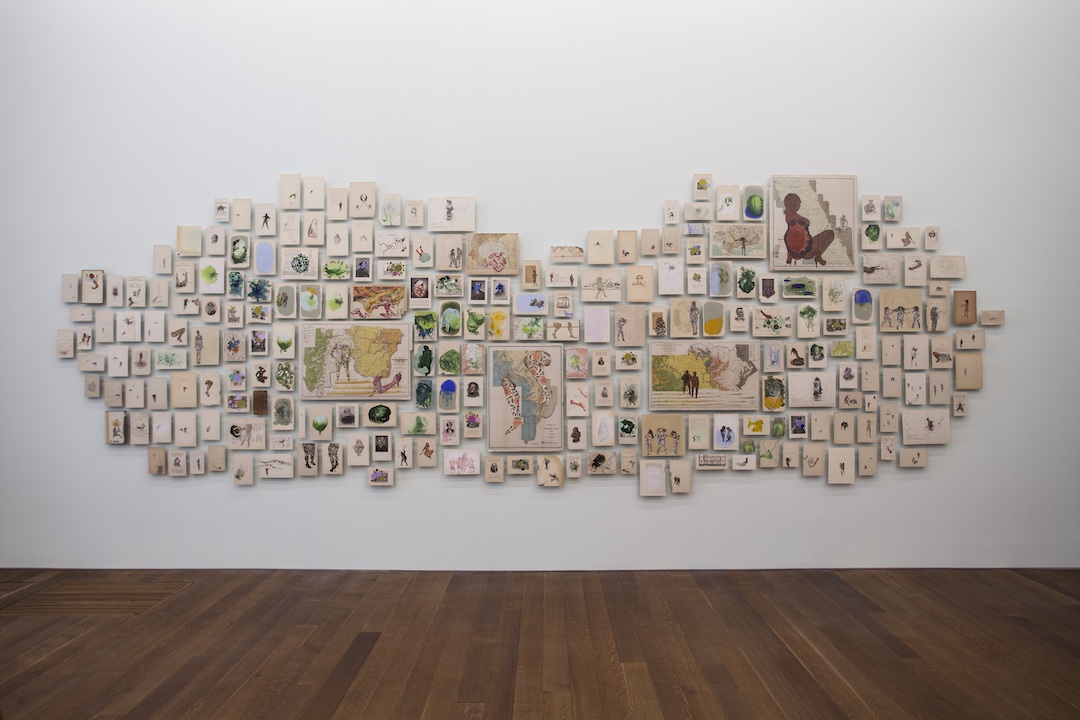Working across mediums of painting, sculpture, drawing, and installation, Dominican-American artist Firelei Báez delves into the fluid identities and historical narratives of the Atlantic Basin. She draws on the disciplines of anthropology, geography, folklore, fantasy, science fiction, and social history to unsettle categories of race, gender, and nationality in her work.
In Man Without a Country (aka anthropophagist wading in the Artibonite River), Báez uses two hundred and twenty-five pages sourced from late nineteenth-century texts on the history of Hispaniola—the Caribbean island that is divided between the Dominican Republic and Haiti—as supports for her hand-drawn illustrations. Her drawings depict chimeric organisms, femme figurations, and decorative embellishments, and introduce found media, such as maps of landscapes that are neither of Hispaniola nor of the Caribbean. The markings intervene across the text, fusing folkloric motifs with academic writing to offer new ways of reading history and culture, particularly of the Caribbean, African, and Latin American diasporas. Báez installs each page individually to form the wall-size installation, suggestive of island geographies and bodies of water, which viewers navigate according to their own trajectories. In resisting singular narratives in favor of multiple readings, Báez’s drawing and installation practice proposes an expansive understanding of place, heritage, and the circulation of knowledge between colonized and colonizer subjects, questioning the very possibility of bounded categories of identity.
800.20.02
